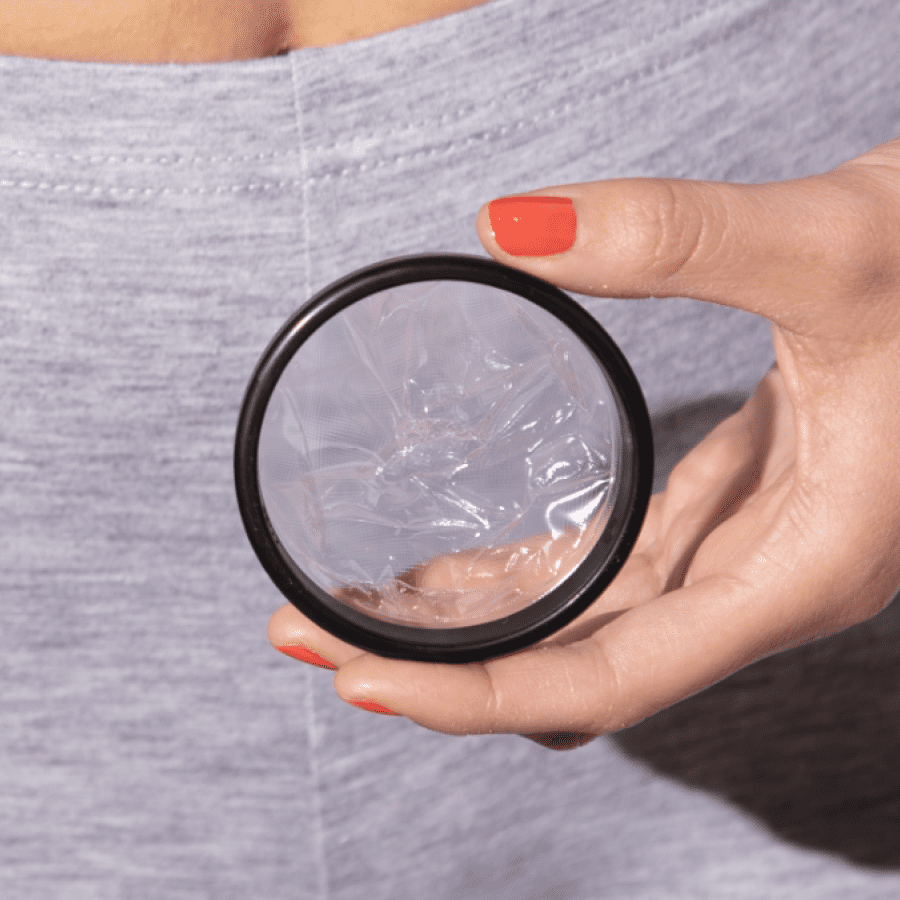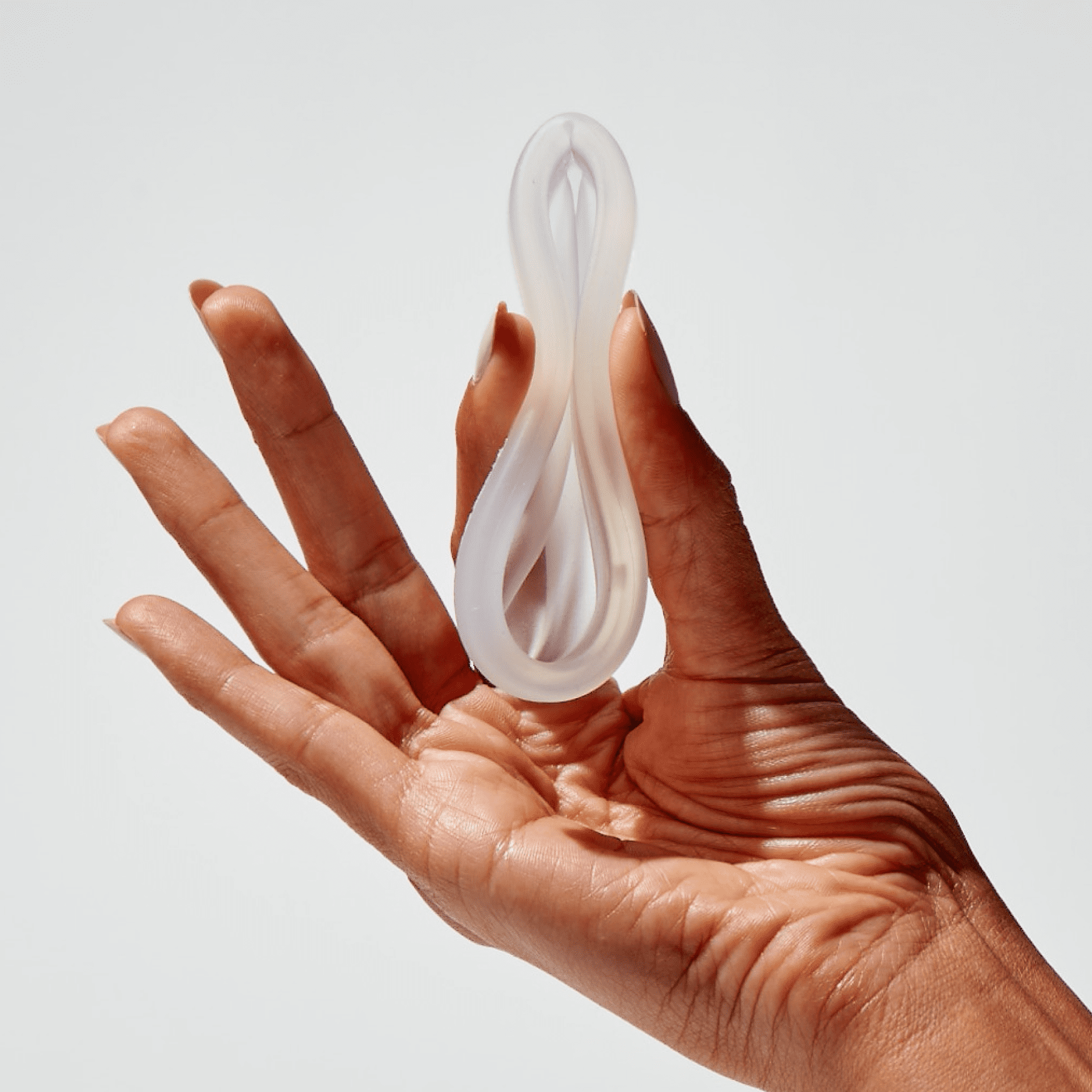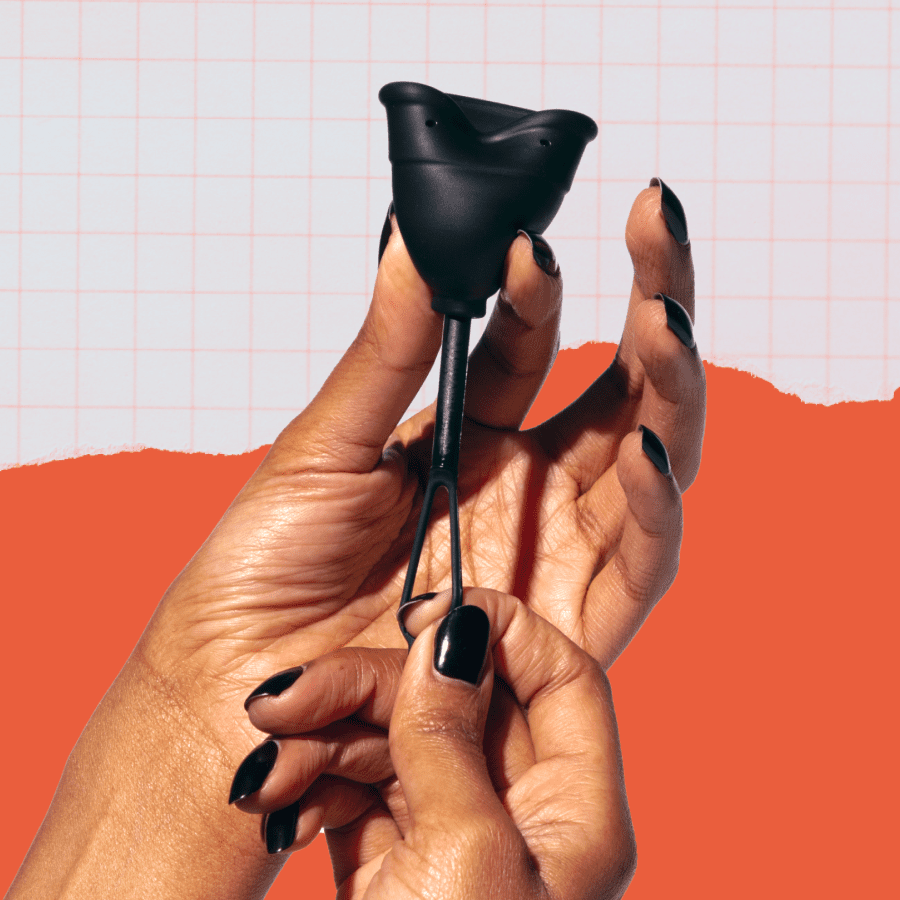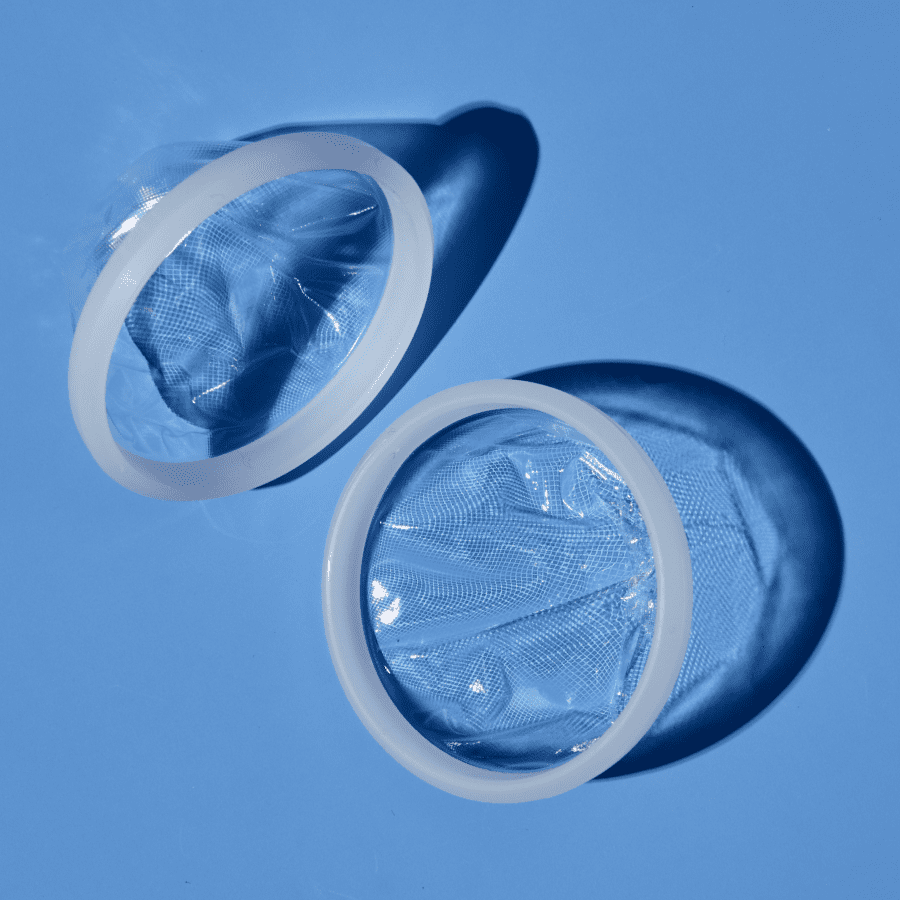Why Flex Disc “leaks” when you use the bathroom
Why is there blood in the toilet when I pee while wearing Flex Disc?
Does that mean it’s in wrong? Did I push it back far enough? It hasn’t leaked at all until now… what’s going on?!
These are all questions we get pretty often—so if you’re wondering the same thing, have no fear! Seeing blood in the toilet when you’re using Flex Disc is 100% normal (and even a nice benefit of the disc, we might add).
Here’s what’s going on when you use the bathroom while wearing a menstrual disc. Spoiler alert: It doesn’t mean your disc is actually leaking.


Flex Disc leaks when I pee… What’s going on?
First off, don’t stress. Seeing a little blood in the toilet or on your TP when wearing a menstrual disc is a-okay. What’s happening is that your disc is sliding down a little bit in your vaginal canal when you bear down to pee or poop. Your disc’s front edge may have made its way just beyond your pubic bone—and this lets a little fluid out.
Sooo, why exactly does this happen? We gotchu. Let’s first revisit that set of muscles known as your pelvic floor. As explained in another recent Fornix blog post, “you can thank your pelvic floor for everything from bathroom breaks to sexual pleasure, childbirth, and your ability to stay upright when walking around.”
The pelvic floor sits at the base of your pelvis—a literal floor—and is generally bowl-shaped, supporting your bladder, bowel, and uterus. These muscles play a key role in continence, a.k.a. your ability to “hold it” (and thank goodness for that). They also have a certain amount of influence over the vagina, especially in terms of its length and tightness: One 2008 study found that the voluntary pelvic floor muscles “impose significant closure forces” along the vaginal canal. 1
Translation? When you squeeze up with your pelvic floor, as you would when doing a kegel, your vagina narrows and “tightens” and your pelvic floor moves upwards and inwards. When you bear down on your pelvic floor, as you would when trying to poop, your cervix lowers, shortening your vaginal canal, and your pelvic floor muscles move downwards and outwards.
And with the right circumstances at play—i.e. how heavy your flow is that day, how long you’ve been wearing your disc, the height of your cervix, and how hard you were bearing down—your Flex Disc might just shift a little past your pubic bone (which typically holds it up and securely in place) and let out a little blood.
Believe it or not, this is actually a feature we really love about using a menstrual disc! (More on that in a moment.)
To get your disc back into place after you’re done on the toilet, just use a clean finger and push it all the way back into the vaginal fornix, tucking the front rim up behind your pubic bone. Alternatively, pull your disc back into place by doing a kegel (#handsfree).
How to hack your heavy flow days with Flex Disc: Mid-wear emptying
Did you know that there’s a trick to making your Flex Disc last the full 12 hours even on your heaviest flow days? It’s all about mastering the disc’s mid-wear emptying feature, which only requires a little familiarity with your pelvic floor.
Here’s how to do it:
Imagine you’re a few hours into wearing your disc. It’s a heavy flow day, but you’re busy at work and you’d rather not fully change your period product in the bathroom you share with your coworkers.
So, you go to the bathroom as usual, but when you’re done, you give those pelvic floor muscles a little extra downward push (while still sitting on the toilet). Imagine you’re trying to “give birth” to your disc. You should see or feel a little blood dump out into the toilet.
Voila! You did it. Your disc is now significantly less full. Now, all you need to do is either A. perform a quick kegel or B. use a clean finger to push your disc back into its original position, with the front rim tucked up securely behind your pubic bone. Use a Flex Wipe to freshen up, wash your hands, and get back to your day without a single worry about potential leakage.
If you use this tactic every time you go to the bathroom while wearing Flex Disc, you’ll probably notice that just one disc will last you the entire day—its full 12-hour lifespan. This means less time feeling bothered by being on your period and more time doing, ya know, stuff you actually enjoy!
Keep in mind that, on lighter days, you might not be able to push out any blood using this tactic. It works best on the first few days of your period, when your flow tends to be at its heaviest. It’s also worth noting that mid-wear dumping is only possible with a menstrual disc, and will not work with a menstrual cup (which is held in place via suction and is worn lower down in the vaginal canal).


Wait! Flex Disc is leaking at other times during wear
Unless you’re actively using your pelvic floor muscles to push, there’s no reason to worry about toilet spillage translating into actual leakage while you’re going about your day.
However, if you are experiencing leaks at other times with a menstrual disc, it’s usually due to one of the following issues:
- Your disc isn’t tucked far enough back into the vaginal fornix, or is positioned incorrectly. When inserting a menstrual disc, think down and back towards your tailbone—don’t angle it upwards like a tampon. Once your disc is all the way back in your vaginal canal, tuck the front rim up behind your pubic bone. This is what holds the disc in place! When Flex Disc is inserted correctly, you shouldn’t be able to feel it at all.
- Your flow has surpassed your disc’s maximum capacity. Most menstruators are able to use a single Flex Disc during a 12-hour time frame, but if you have an especially heavy flow, you might need to change your disc sooner (or take advantage of the mid-wear emptying feature explained above). For reference, Flex Disc can hold up to six teaspoons of fluid—the equivalent of three super tampons. The average menstruating human bleeds about three teaspoons in 24 hours.
CHAT WITH A FLEXPERT:
Still having trouble? No worries—our resident Flexperts are here to help anytime you need it. Here’s how to reach us: email us at help@flexfits.com
Love Flex Disc? Have feedback? We want to hear it! Slide into our DMs on Instagram @flex or send us a message on Facebook to tell us what you think.
This article is informational only and is not offered as medical advice, nor does it substitute for a consultation with your physician. If you have any gynecological/medical concerns or conditions, please consult your physician.
© 2021 The Flex Company. All Rights Reserved.
- Shishido, K., Peng, Q., Jones, R., Omata, S., & Constantinou, C. E. (2008). Influence of pelvic floor muscle contraction on the profile of vaginal closure pressure in continent and stress urinary incontinent women. The Journal of urology, 179(5), 1917–1922. https://doi.org/10.1016/j.juro.2008.01.020[↩]






